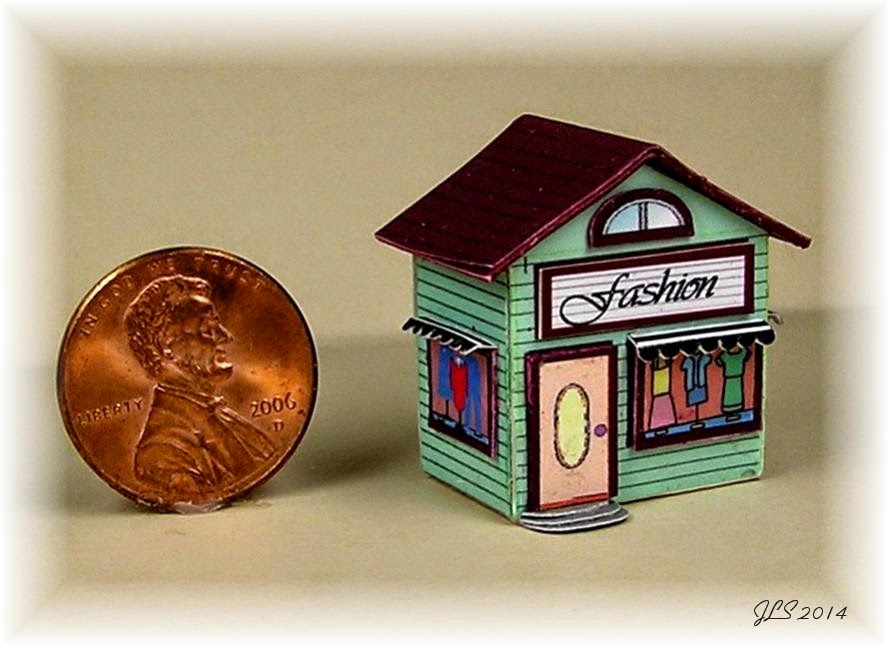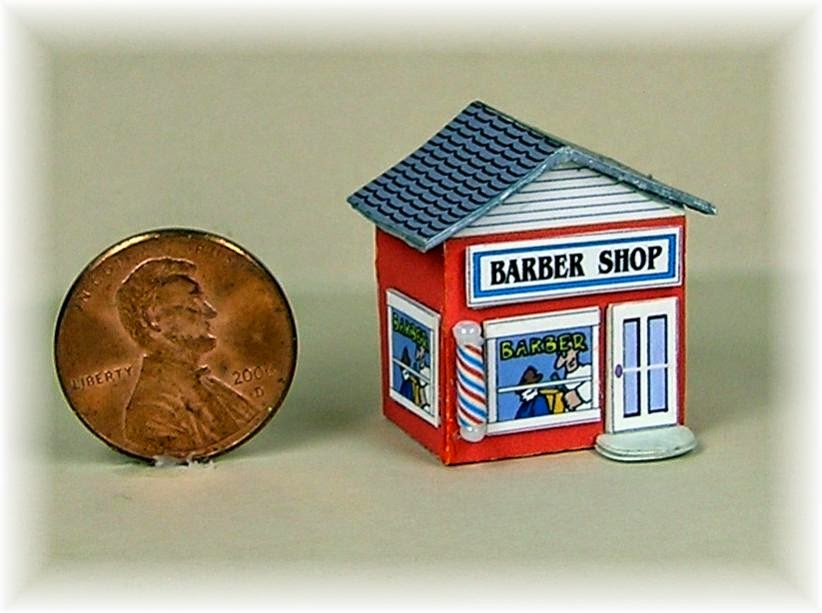VILLAGE LITTLE RED SCHOOLHOUSE
The Little Red Schoolhouse is the 4th structure in my Little
village series of tiny printie, cut
& glue buildings. It can be used as
a stand-alone piece displayed under a glass dome and such, or it can become a
toy in a dollhouse or toy store, etc. It
can also be transformed into a glitter building (as described for the church in
this series) or become part of a snow village.
To construct the Schoolhouse print
out a copy of the pdf file at the very end of this post onto matte presentation paper using your
printer’s best settings. This will give you a true to scale, true to color,
detailed printie. When the ink has set,
use small sharp scissors to cut out
the building.
Using a pointed stylus & a
straight edge, score across all tabs, sides and bottom lines. Fold the side and bottom tabs in at right
angles. Using glue stick applied
with a small stiff-bristled brush glue
sides and bottom together to form the shape.
Cut out roof. Score across both lines. Fold & glue stick in half so that the
underside of the roof as marked is on the bottom. When glue has set, fold in half again. Use a gray
watercolor pencil to color white edges. Fold
the top tabs of the building in at right angles. Using glue stick adhere the roof to the top
of the building so it sits evenly.
Cut out the steeple and glue
it together as for the schoolhouse. Glue
it evenly to the top of the schoolhouse.
Prepare the steeple’s roof as
for the schoolhouse roof. Before you
glue it in place, use a needle to poke a hole in in its center. Glue the roof in place on the steeple.
Cut out windows and glue stick
over matching images on the building.
Roughly cut out door and glue
to a double thickness of a scrap of the same paper. Cut out and glue over its image on the
building.
Glue the triangle overhang to
5 layers of scrap of the same paper. Cut
out and glue in place on the building.
Rough cut the school sign and
glue it to two layers of scrap of the same paper. Cut out.
Color edges with a watercolor
pencil in a tint close to the color of the schoolhouse. Glue in place on the building.
Cut out the flag & score
in half (this is probably easier to do before cutting it out). Cut about a 3/8” long piece of very thin brass wire. Fold the flag in half on the score line and
glue it around the wire, tops even. Poke
the other end of the wire into the needle hole in the steeple roof, adjusting
its height to your liking.
To create the tiny Schoolhouse
Vignette as scene here:
The school sits on a base of a 1-7/16 sq. matboard. To prepare the base paint the top a grass
green.
Cut a piece of lightweight gray paper to shape shown on diagram and glue
(gluestick) it in place for the walkway & sidewalk.
Trim the edges of the base with a fine gray cording such Bunka
using a craft glue such as Crafter’s
Pick The Ultimate.
Glue the schoolhouse in place on the base.
Using a fine model railroad
turf/grass such as http://www.amazon.com/JTT-Landscaping-Material-Blended-Autumn/dp/B002PP0GNE sift it with a fine mesh strainer to get the finest
of the material. Using a small
stiff-bristled brush, apply a light coating of glue stick to the green area of
the base. Immediately sprinkle on your
prepared grass and lightly tamp with a dry small bristled bush. Tap and shake off excess grass.
For hedge use a green pipe cleaner -these are narrower than the usual
chenille stems. Paint with green acrylic
paint to covering any exposed wire. When
the paint has dried t trim about half of the “fur” off all around the wire. It
should be no thicker than the space in back of the schoolhouse. Sharply bend and cut two pieces, each to fit
across the front of the lawn/down the side/and to center back. It may take a while to get the exact fit with
sharp corners but keep tying on until they fit.
Using craft glue put them in place on the base.
For interest I added a white “post” on either side of the entrance that sits a bit higher than the hedge. A section of round toothpick, especially one
with a carved top, can easily be sanded down and shaped a bit to use here.
Seven school children with back packs are in front of the school, (N
Scale from PeopleScale, http://www.peoplescale.com/ ). There is also
one dog ( n scale Dogs and Cats from
Woodland Scenics (these are oh so tiny…one is forever lost on my workroom
floor) http://woodlandscenics.woodlandscenics.com ) who followed its
master to school & is being told to “GO HOME!”
“School Days,
School Days, Dear Old Golden Rule Days…”
PDF FILE TO PRINT OR DOWNLOAD:
























































